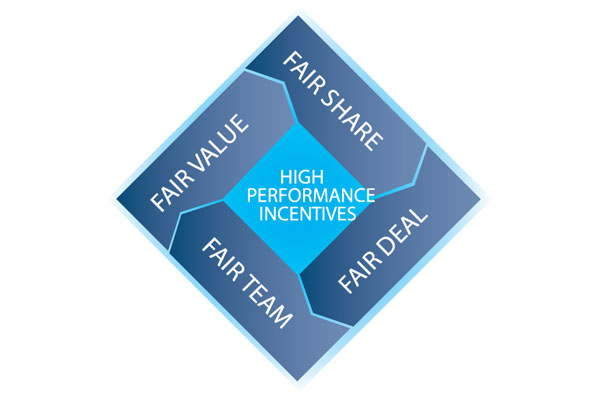Are Equity Grants Truly the Holy Grail?
“I am going to make you a 20% equity partner.” These are some of the sweetest words that a 2nd in command will ever hear. Unfortunately, this could also be the beginning of the end. In many cases, the cost of transferring equity can starve the company of growth capital.
Case Study – Equity Grant for 2nd in Command
- Your business has been thriving due to growing demand for your IT services and high performance execution led by your 2nd in command. As part of a retention program, you pay the tax cost to make your 2nd in command a 20% equity
- Growth strains your working capital. As an owner, you are business rich and cash poor. Sensing lack of capital to expand, your 2nd in command “falls in love” with your competitor and exits your company.
- How do you afford to buy out your 20% minority partner? What happens if your company or industry stalls due to higher competitive intensity or lower customer demand? Who ends up carrying the ball once your key executive leaves?
At Bold Value, we don’t start with a presumed equity or capital structure; we start with the “value sharing curve.” We define who gets paid what value at what time including the often surprising tax implications. Only then do we consider what we call the “top forty” structural ways to share value in a privately held business.
For example, are you better off offering “equity now” such as restricted stock or phantom stock? Are you better off offering “equity later” such as a change in control bonus? Alternatively, are “cash later” designs such as profit appreciation rights the best fit or is an old fashioned “cash now” annual bonuses the best solution? Might a custom solution work best for your team? When it comes to co-owner incentives, we are true believers that structure follows strategy, not the other way around.
Six Questions to Ask Prior to Making Equity Grants
Equity grants are powerful, but can be costly and inflexible. Before making true equity grants, ask yourself:
- What is the “total program cost” to transfer equity such as owner dilution, tax cost, valuation, buy- in and buyout capital, revised buy-sell and corporate agreements, etc.?
- Are we creating a low-friction pathway for high performers to enter and low performers to exit our organization consistent with our growth strategy?
- Who gets cashed out first – when and why? When does the founder get liquid?
- Who is diluted when the next key person becomes an owner?
- How does the equity transfer impact the owners’ estate planning?
- What is the cost to unwind the equity grant if it does not work out? Can the grant be reversed at no or low cost?
One of our clients said it best: “Value sharing is all about the economics, not the legal structure. If we can achieve the same outcome for much less cost, everybody wins.”
Next time you feel “deal heat” with your 2nd in command – take a deep breath and start with the value-sharing-curve in mind. Your 2nd in command will still love you.
Do you think you might have hidden surprises in your executive compensation, equity strategies, and exit & legacy planning?
Please call us for a 2nd Opinion.
Please contact us to learn more.















